Rockledge site still on table
Nelsonville’s cell tower battle narrowed from two fronts to one on Monday (Nov. 20) when the Nelsonville Village Board announced it had withdrawn its offer of land on Secor Street as an alternate location for a cell tower proposed for Rockledge Drive.
Greeted with applause at the meeting, moved to Philipstown Town Hall to accommodate the audience, the decision turns village attention back to Rockledge. There, on a 9.6-acre parcel, Homeland Towers LLC wants to erect a 110-foot tower above the Cold Spring Cemetery and near residences. (Nelsonville’s zoning code permits cell towers in residential areas.) A dead end, Rockledge connects to Moffatt Road, which twists uphill from Route 9D at the southern end of Nelsonville and Cold Spring.
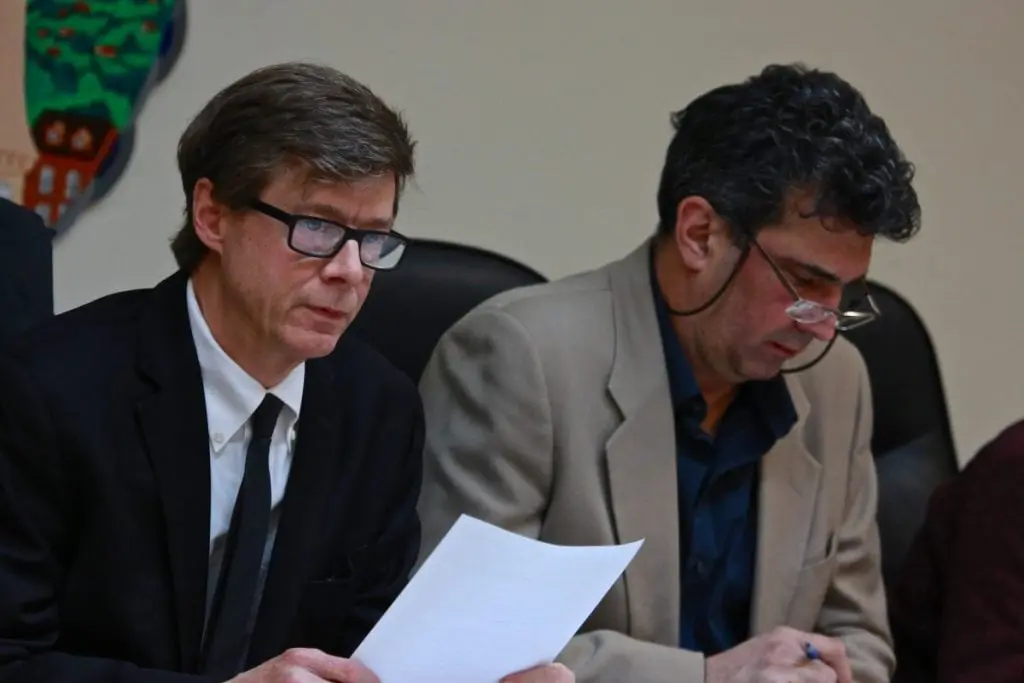
The Rockledge application is being reviewed by the Nelsonville Zoning Board of Appeals and the Planning Board, which on Nov. 15 opened a joint public hearing (video below), scheduled to resume at 7:30 p.m. on Tuesday, Nov. 28, at Town Hall. To proceed, the project must obtain a special-use permit from the ZBA and site-plan approval from the Planning Board.
According to Robert Gaudioso, the Homeland Towers attorney, because Nelsonville did not contest anything in the Rockledge application within 30 days of receiving it, the village must approve or deny it within 150 days, or Dec. 17.
Rep. Sean Patrick Maloney, who represents the Highlands in Congress and lives off Moffatt Road, asked Homeland Towers in a Nov. 14 letter to work with Nelsonville and extend the deadline by 60 days. He noted that review of the application is underway but “is extremely taxing for this small community and requires a great deal of their time and limited resources.”
In addition, he wrote in the letter, also sent to the Federal Communications Commission, “there are several complicated issues surrounding the proposed site’s historical nature that make the process even more difficult and resource-intensive.”
Homeland Towers, which represents Verizon Wireless, also wants to construct a tower on Vineyard Road, near the intersection of Routes 9 and 301, an area under jurisdiction of the Town of Philipstown. Like the proposed Rockledge tower, it is fiercely opposed by many residents.
Secor Street
Amid the furors in October, the three-man Nelsonville Village Board suggested that Homeland Towers put the tower on a wooded, 4-acre, village-owned tract bordered on one side by Secor Street and on another by the American Legion and Philipstown Volunteer Ambulance Corps buildings on Cedar Street. The site also is 975 feet from the Haldane Elementary School. At a Village Board workshop on Nov. 8, residents and the Haldane school superintendent vigorously objected to the Secor Street proposal.
Twelve days later, the Village Board abandoned it.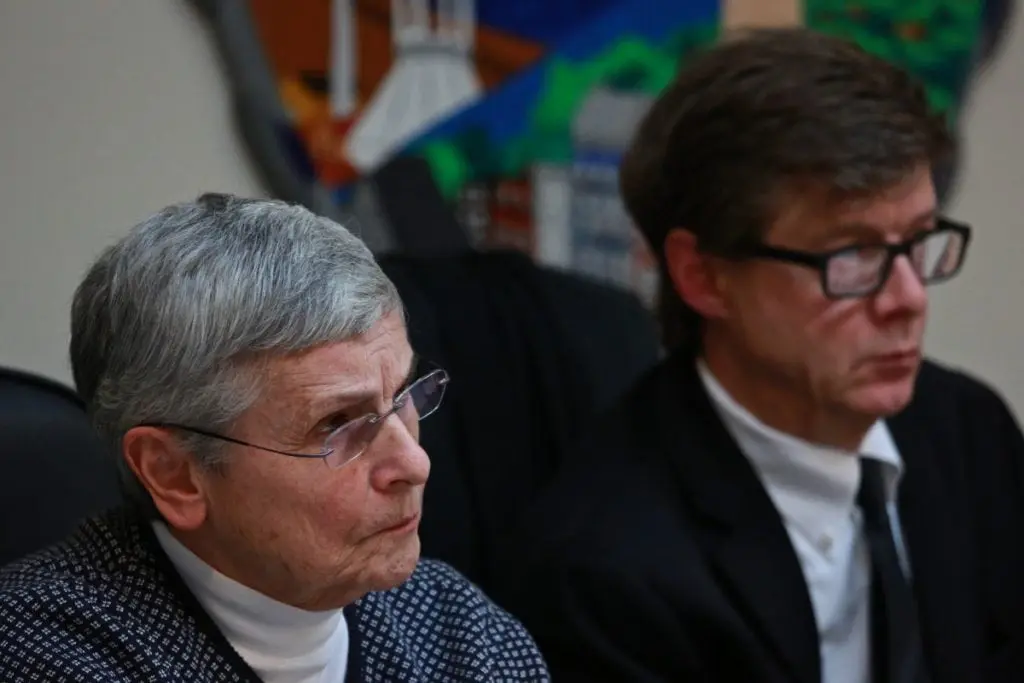
Trustee Alan Potts explained Monday night that the board had agreed that using the Secor acreage “would not proceed without support from the Nelsonville community.” He cited objections from residents “regarding the visual and property-value effects” of having a cell tower there. He said Homeland Towers had been informed.
Mayor Bill O’Neill encouraged the residents “to hold your coalition together to oppose the Rockledge tower” and help “defend our beautiful and historic cemetery” and the children at the nearby Manitou School at Moffatt Road and Route 9D, though the allowable reasons for vetoing a cell tower permit do not include fears about health.
Trustee Thomas Robertson assured the audience that the mayor and trustees are always open to residents’ concerns. “You have to understand that the three people sitting before you are the most sincere in Nelsonville,” he said. “Nothing in our makeup is vicious. We love this place and are trying to help it.”
Michael Bowman, who served on the Cold Spring Board of Trustees before moving to Nelsonville, expressed appreciation to O’Neill, Potts, Robertson and Village Clerk Pauline Minners “for listening to your neighbors. You made the right decision.” He said he and other Secor tower opponents now “are going to get involved at Rockledge.”
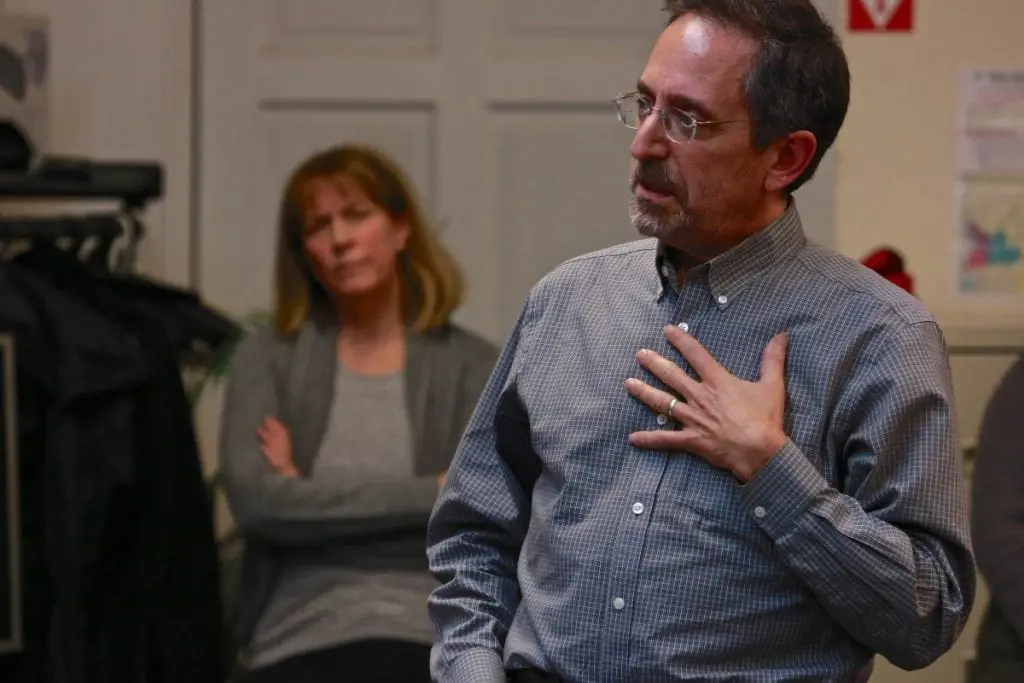
Bowman also asked the Village Board to make the Secor site permanent parkland, “as it was meant to be.”
O’Neill promised that the board would carefully weigh possibilities.
Rockledge site public hearing
Five days before the Village Board meeting, opponents of the Rockledge tower proposal crowded Town Hall for the joint ZBA-Planning Board hearing in which the audience filled chairs, nearly every available inch of floor space and the doorway and stairwell.
Many of the issues raised previously in cell tower forums surfaced anew, including the question of whether enough of a “significant gap” exists in local wireless capabilities to justify one or two new towers.
Planning Board Chairman Steve Marino told Gaudioso, the Homeland Towers attorney, that residents “don’t understand where the gap is and why a tower in any of these areas is necessary.” Planning Board Member Dennis Meekins similarly wondered what level of gap is acceptable.
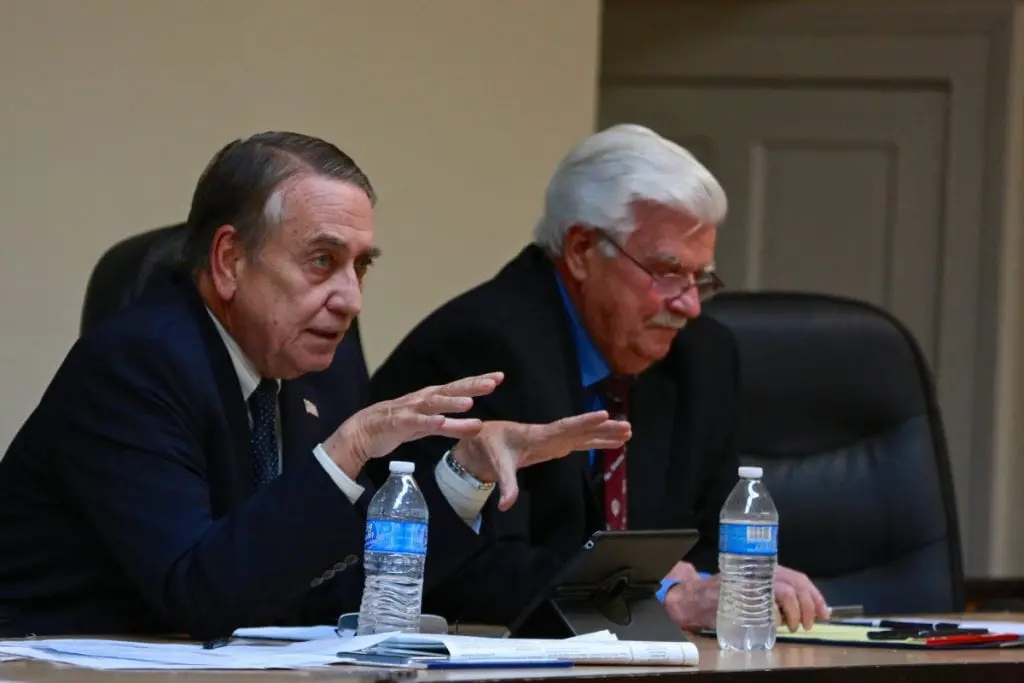
Gaudioso replied that having a few houses with iffy coverage is of relatively little consequence while spotty coverage along a highway like Route 9 “is a significant gap.” He also said a “significant gap” must be addressed not only to avoid phone-call problems but to ensure the flow of “data service, phone calls over data” and third- and fourth-generation wireless communications, “all combined in a network.”
Moreover, Gaudioso said, denying a tower application because Nelsonville thinks no gap exists “would be a real bad reason, because it’s not a criterion in your code and not a criterion we have to meet.” Furthermore, he said, federal law stipulates that “all communications may not be prohibited” and “even if there is a good reason to deny” a tower permit, “you have to find a way not to prohibit it” or must “find an alternative” site.
The provision he cited, Section 253 of the 1996 Telecommunications Act on “removal of barriers to entry,” says that “no state or local statute or regulation, or other state or local legal requirement, may prohibit or have the effect of prohibiting the ability of any entity to provide any interstate or intra-state telecommunications service.”
The wording does not specifically mention cell towers, or state that local governments must guarantee companies freedom to use them to deliver all types of service everywhere, including inside cars on roads.
Philipstown Supervisor Richard Shea advised the Nelsonville boards to be wary of Gaudioso’s “compelling arguments.” The lawyer “is paid to” make them, “as is every other ‘suit’ over there,” Shea said, speaking of Gaudioso’s associates from Homeland Towers, Verizon, AT&T and other firms. “Homeland Towers is in the business of putting up towers to generate profit and revenue.”
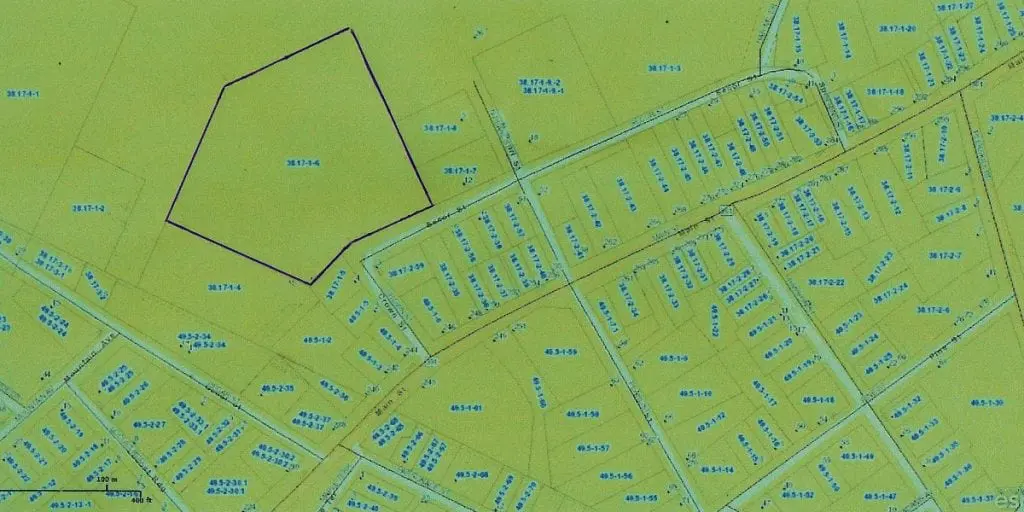
A tower in a place like Rockledge detracts from the town’s scenic beauty “and if we compromise that, everything falls apart,” Shea said. “Don’t be fooled, because their job is to get this tower in. Our job is to protect what we hold dear.”
Sandy Saunders, of Garrison, again proposed that the tower go on a property he owns on Brook Street. Gaudioso replied that it’s in a commercial zone, where, under the Nelsonville village code, cell towers are banned.
Maria Marrison said the Rockledge tower would wreck the views from the Manitou School, which she established. “It’s affecting the nature of my historic property, of my school. I urge you to say ‘no,’” she told the boards.
“We refuse to be one of those villages” that acquiesces to telecommunications giants, Healy Road homeowner Eliza Nagel informed the Homeland Towers delegation. “We will not be cowed by your threats of lawsuits.”
“There are court cases out there that support our situation,” said Bevan Harris, of Moffatt Road. At a time when the nation is badly fractured, he added, “we need to stay together as a community.”
Video of Nov. 20 Village Board meeting by Gregory Gunder, courtesy of Village of Nelsonville
Video of Nov. 15 ZBA/Planning Board meeting by Gregory Gunder, courtesy of Village of Nelsonville


The spirit of Pete Seeger was alive in Nelsonville on Monday, Nov. 20.
Who knows if the “divide and conquer” technique of Rockledge vs. Secor was intentional, but it looked to me like it may have backfired, as the general consensus of neighbors in the room (and there were many) was: we prefer our current level of telephone service to an additional telecommunications tower in Nelsonville, either at Secor or Rockledge.
Moreover, the controversy drew many to the room to see firsthand the strong-arming by Homeland’s lawyer, Robert Gaudioso, who never once addressed the concerns raised by the citizens in the room. Instead, he kept his back to the crowd and admonished the board(s) in so many words that any action taken to assuage the petty concerns of those assembled would certainly bring a federal lawsuit to bear.
It is key to note that Gaudioso never effectively addressed the question regarding the mythical “gap in coverage,” which to me seems to be the part and parcel to the salient issue at hand. Instead, he gave boilerplate answers about generic gaps and the definition of gaps. Full coverage has been reported by meeting attendees along the lengths of Routes 9, 9D and 301. Tellingly, Gaudioso missed the tragic irony of his assertion that there was a slight gap (or weak signal?) in coverage at the riverfront in Cold Spring; as if we in this community would welcome a looming telecommunications tower in our valley just for a few more bars on our phones while gazing at the natural beauty of our beloved Hudson Highlands?
I question Gaudioso’s assertion that denying a tower application because Nelsonville thinks no gap exists “would be a real bad reason, because it’s not a criterion in your code and not a criterion we have to meet.” It is not my understanding that the code lays out all criteria for the issuance of special-use permits. By this logic we would have to approve as many unnecessary towers that they applied to build, regardless of their utility? This makes no sense — community need for a structure or commercial service is always a part of the special-use permit review process.
The intention of requiring special-use permits is to give the board(s) greater discretion in weighing such factors as neighbor concerns, impacts on the village, necessity, etc. I have never in all my years seen a special-use permit section in a code which even endeavors to lay out each and every factor for which a special -use permit might be denied.
It seems to me that in tandem with the aesthetic question as it relates to the Cold Spring Cemetery and the bucolic valley in which we live (including views from surrounding trails and parkland) this “gap in coverage” is the salient question, because if the extra coverage is not needed, there seems no good reason to burden the community with a tower which has caused so many such grave concern. In other words, it will be crucial to pair the “gap-in-coverage” argument with the “aesthetics” argument, because in tandem they seem to disqualify this project. Furthermore, if a gap in coverage which could necessitate more antennas in the area is discovered, there is a technology called outdoor Distributed Antenna System (oDAS) which as I understand it can be quite effective in an area such as ours.
Homeland won’t discuss oDAS because they don’t offer this technology. I don’t see why we should be burdened with outdated technology just because that is all Homeland is capable of providing. If we can show the FCC that we are looking for alternative technologies (as opposed to alternative sites, as Gaudioso suggests), perhaps that will be sufficient to get them off our backs.
When Gaudioso fell to his cyclical arguments that “all communications may not be prohibited” and “even if there is a good reason to deny” a tower permit, “you have to find a way not to prohibit it” or must “find an alternative” site, it was clear to all in the room that this is a fight worth fighting, and I hope we continue to do so.